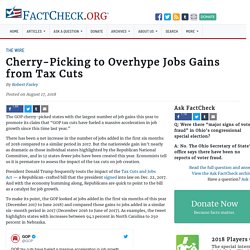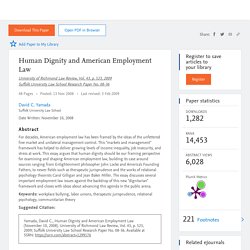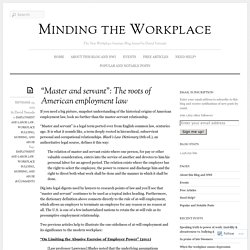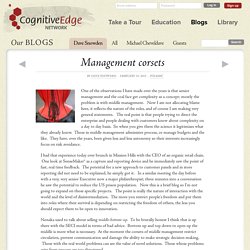

employee, employer, employment, career, work, job, earn, living, survive, day job, wage, supervisor, manager, workplace, workplace bullying, labor, labor union, therapeutic jurisprudence, relational psychology, employee speech, free speech, boss, full-time, part time, at-will employment, master, servant, master servant, employment law, leadership, servant leadership, management, sick leave, worker, worker compensation, hiring, hiring practice, cubicle, overtime, benefits, desk, strategic, human resources, resume, contract, workroom, EEOC, equal opportunity employment commission, private sector, public sector, job security, unemployment, blue collar, white collar, unions, compensation, dismissal, fired, maternity leave, employee manual, administration, co-worker, assembly line, factory, foreman, time card, salary, retirement, family medical leave act, FMLA, assistant, discrimination, harassment.
2/24/19: The Religion of Workism Is Making Americans Miserable. There is nothing wrong with work, when work must be done. And there is no question that an elite obsession with meaningful work will produce a handful of winners who hit the workist lottery: busy, rich, and deeply fulfilled. But a culture that funnels its dreams of self-actualization into salaried jobs is setting itself up for collective anxiety, mass disappointment, and inevitable burnout. In the past century, the American conception of work has shifted from jobs to careers to callings—from necessity to status to meaning.
In an agrarian or early-manufacturing economy, where tens of millions of people perform similar routinized tasks, there are no delusions about the higher purpose of, say, planting corn or screwing bolts: It’s just a job. Read: When “love what you do” pushes women to quit. 8/17/18: Cherry-Picking to Overhype Jobs Gains from Tax Cuts. The GOP cherry-picked states with the largest number of job gains this year to promote its claim that “GOP tax cuts have fueled a massive acceleration in job growth since this time last year.”

There has been a net increase in the number of jobs added in the first six months of 2018 compared to a similar period in 2017. But the nationwide gain isn’t nearly as dramatic as those individual states highlighted by the Republican National Committee, and in 12 states fewer jobs have been created this year. Voices from the Cubicle: Protecting and Encouraging Private Employee Speech in the Post-Industrial Workplace by David C. Yamada.
5/12/21: There’s No Labor Shortage. Pay Workers What They Deserve. Dan Price, the CEO of Gravity Payments who raised the starting wage at his company to $70,000, recently said he gets 300 applications for every opening.

It turns out there’s no “labor shortage” — just a shortage of people who will work for starvation wages, especially during a pandemic that’s hit low-wage workers the hardest. What we are witnessing now is a reckoning and reassessment of the future of work. But rather than think critically about why so many workers are hesitant to return, some pundits and right-wing politicians blame unemployment benefits. President Joe Biden’s American Rescue Plan provides an extra $300 a week for those out of work during the pandemic. The GOP now wants to take that away. 11/21/19: Low-wage work more pervasive than you think, and there aren’t enough “good jobs” to go around.
Even as the U.S. economy hums along at a favorable pace, there is a vast segment of workers today earning wages low enough to leave their livelihood and families extremely vulnerable.

That’s one of the main takeaways from our new analysis, in which we found that 53 million Americans between the ages of 18 to 64—accounting for 44% of all workers—qualify as “low-wage.” Their median hourly wages are $10.22, and median annual earnings are about $18,000. (See the methods section of our paper to learn about how we identify low-wage workers.) The existence of low-wage work is hardly a surprise, but most people—except, perhaps, low-wage workers themselves—underestimate how prevalent it is.
3/13/19: 3,736 US Women with Disabilities Lose Jobs. Washington, D.C., March 13 – As we celebrate Women’s History Month, RespectAbility recognizes the contributions made and the important presence of women to the United States.

It is important to note this includes more than 20.9 million women living with a disability in the U.S., more than 10.2 million of which are working-age (18-64). Therefore, we would like to reflect on the realities and challenges that continue to shape the lives of women with disabilities. Only 34.6 percent of working-age women with disabilities (3.5 million) are employed in the U.S. compared to 82.5 percent of working-age women without disabilities.
This is in line with the rest of the country. With fully one-in-four American adults having a disability, just 37 percent of those who are working-age are employed, despite polls showing that most of them want to work. Human Dignity and American Employment Law by David C. Yamada. Abstract For decades, American employment law has been framed by the ideas of the unfettered free market and unilateral management control.

This "markets and management" framework has helped to deliver growing levels of income inequality, job insecurity, and stress at work. “Master and servant”: The roots of American employment law. If you need a big picture, snapshot understanding of the historical origins of American employment law, look no further than the master-servant relationship.

“Master and servant” is a legal term ported over from English common law, centuries ago. It is what it sounds like, a term deeply rooted in hierarchical, subservient personal and occupational relationships. Black’s Law Dictionary (6th ed.), an authoritative legal source, defines it this way: The relation of master and servant exists where one person, for pay or other valuable consideration, enters into the service of another and devotes to him his personal labor for an agreed period. The Phenomenon of 'Workplace Bullying' and the Need for Status-Blind Hostile Work Environment Protection by David C. Yamada. A Leader’s Framework for Decision Making □ Reprint: R0711C Many executives are surprised when previously successful leadership approaches fail in new situations, but different contexts call for different kinds of responses.

Before addressing a situation, leaders need to recognize which... In January 1993, a gunman murdered seven people in a fast-food restaurant in Palatine, a suburb of Chicago. In his dual roles as an administrative executive and spokesperson for the police department, Deputy Chief Walter Gasior suddenly had to cope with several different situations at once. He had to deal with the grieving families and a frightened community, help direct the operations of an extremely busy police department, and take questions from the media, which inundated the town with reporters and film crews.
“There would literally be four people coming at me with logistics and media issues all at once,” he recalls. 4/2/19: Curiosity, A Core Ingredient Of Leadership. Breaking News Curiosity means having an interest in situations from which you can potentially learn, or a desire for new experiences.

And a curious mindset has many advantages for organisations, managers and staff. We make fewer mistakes when making decisions if we are open to new things. We learn how to look for alternatives and we are less subject to mistakes such as ‘confirmation bias’ (only looking for information that supports our ideas, rather than looking at information that counters our way of thinking).We view difficult situations in a much more creative manner, and so come up with other solutions. Spencer Harrison (INSEAD) and his colleagues did research into call centres, where jobs are very structured and there is often a high turnover of staff.
2/15/15: Management corsets. One of the observations I have made over the years is that senior management and the coal face get complexity as a concept; mostly the problem is with middle management.

Now I am not allocating blame here, it reflects the nature of the roles, and of course I am making very general statements. The real point is that people trying to direct the enterprise and people dealing with customers know about complexity on a day to day basis. So when you give them the science it legitimises what they already know. Those in middle management administer process, or manage budgets and the like.
12 Best Exercises to Do at Your Desk. Meeting Achievement Stickers. 9 Non-Threatening Leadership Strategies for Women.
Work.